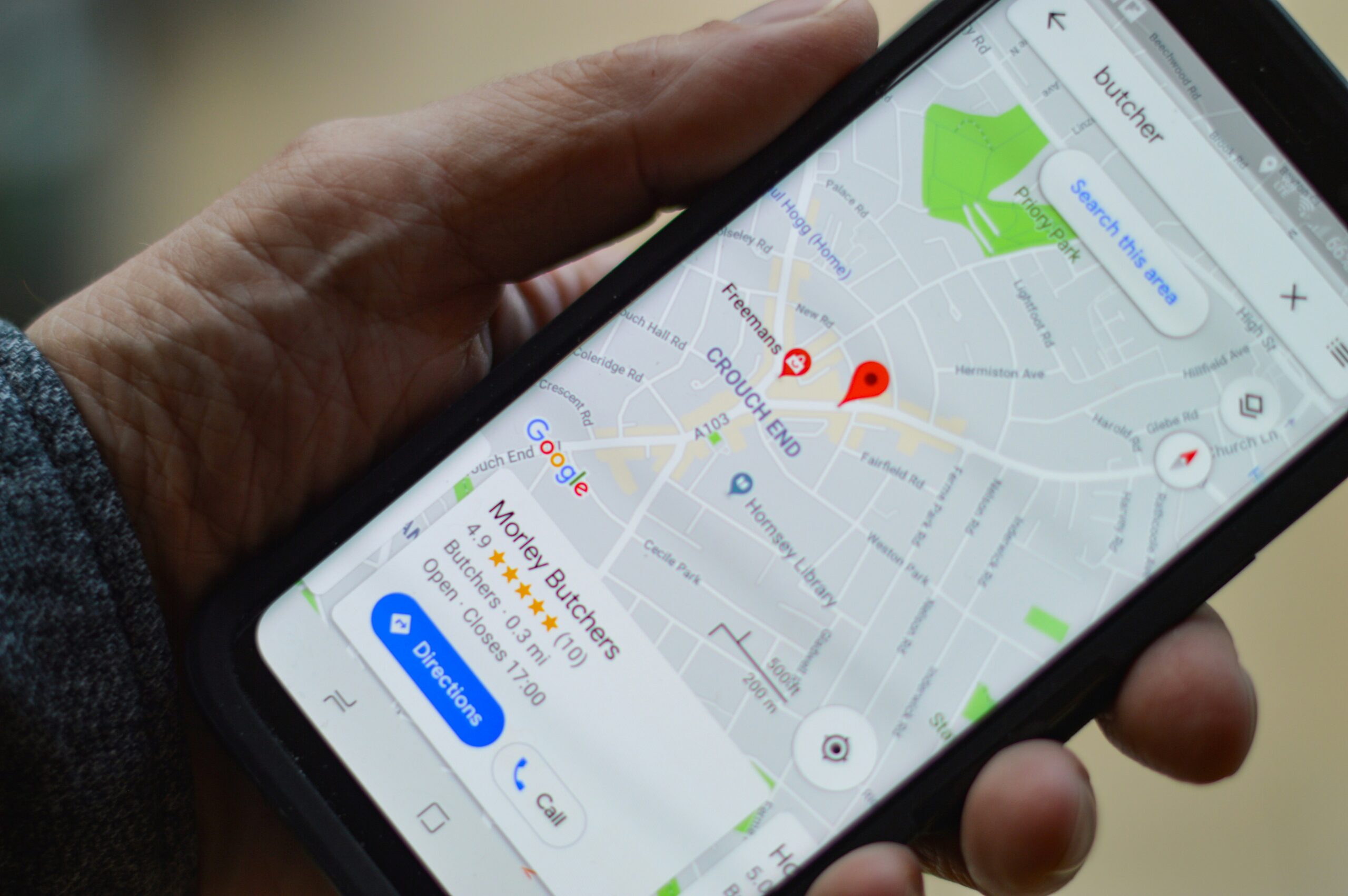In today’s hyper-competitive market, building strong local brand loyalty is not only essential for customer retention, it is also a key driver for top-tier SEO performance and long-term profitability. Local customers who repeatedly engage with a brand signal to search engines that the business is well-trusted and credible, thereby improving local search rankings. This article explores how local loyalty translates into enhanced SEO performance and outlines comprehensive strategies to strengthen brand equity among nearby audiences. It delves into foundational tactics such as exceptional customer service, community engagement, and effective loyalty programs, as well as advanced techniques involving digital channel optimization and cross-promotion partnerships with complementary local businesses.
Additionally, the piece emphasizes measurable outcomes, guiding readers on how to track and analyze the impact of local initiatives on search traffic and customer engagement using modern analytical tools. By understanding the intrinsic connection between word-of-mouth promotion, positive online reviews, and increased click-through rates, businesses can leverage these relationships to create a resilient local brand presence. With insights drawn from academic studies and real-world case examples, this article provides a roadmap for marketers, consultants, and small business owners seeking to unlock the full potential of local strategies in boosting brand loyalty and, ultimately, their competitive edge in digital search. Let’s explore these integral strategies in detail.
Understanding the Connection Between Local Loyalty and SEO Performance

Local loyalty significantly influences SEO performance as it drives organic user engagement, authentic reviews, and consistent interaction with local content. Loyal customers reinforce a brand’s significance through repeat visits and by sharing positive testimonials that ripple across digital platforms, thereby strengthening local search signals.
How Loyal Customers Amplify Your Local Search Signals
Loyal customers serve as organic advocates by frequently searching for and physically visiting local businesses. Their consistent online engagement, such as checking business listings, sharing on social media, and using location-based keywords, contributes directly to increased visibility on search engines. These actions provide search algorithms with fresh data points that directly correlate with higher relevance and improved ranking. For instance, a study by Moz (2020) noted that local search rankings can improve by up to 30% when a business consistently gathers positive signals from its local community. This phenomenon has been further supported by research from BrightLocal, emphasizing that frequent local searches by dedicated customers boost algorithmic trust, further reinforcing superior local search performance.
The Role of Positive Reviews From Local Patrons in SEO
Positive reviews from local customers are a cornerstone component of effective local SEO. These reviews not only build trust for potential customers, but they also serve as vital ranking signals for search engines. When a business regularly receives a steady stream of favorable reviews, it signals to Google that the brand is authoritative and well-regarded within its community. Moreover, well-detailed reviews often mention specific local landmarks and services, providing additional context that can trigger highly relevant searches in neighboring locations. Peer-reviewed research from the Journal of Internet Commerce (2019) shows that companies with higher average review ratings and a robust volume of reviews enjoy an average revenue boost of 15% compared to their competitors. Analyzing these findings further reveals that a transparent review culture can enhance both customer trust and online engagement, thereby positively impacting overall SEO performance.
Increased Click-Through Rates From Recognizable Local Brands
Recognizable local brands often enjoy higher click-through rates (CTR) in search engine results pages (SERPs) because the familiarity evokes trust and reliability among searchers. When local marketers consistently emphasize their community roots through local imagery, testimonials, and stories, the chances of users clicking on the brand’s search result increase substantially. High CTRs, in turn, are an important ranking factor for search engines like Google. Data from a 2021 study by Search Engine Journal indicated that businesses with consistent local branding saw an 18% higher CTR compared to those with generic online profiles. This improvement in click-through behavior reinforces local SEO efforts by signaling to search engines that the business is both relevant and engaging.
User Engagement Metrics Boosted by Loyal Community Followers
Engagement metrics such as time spent on site, pages per session, and bounce rates are significantly boosted when a local audience is actively interacting with a brand’s digital properties. Engaged local customers not only navigate multiple pages filled with locally relevant content, but they also share this content through social media and other digital channels. This cascading effect creates a deeper network of engagement, promoting a higher level of trust and connection with both existing and potential customers. Practically, this consolidation of user engagement metrics is critical for optimizing website performance in search results. As local customers repeatedly return and interact with the brand, search engines take note of the sustained user interest, often leading to improved rankings. Companies that succeed in cultivating such an engaged local community eventually reap the benefits of enhanced search engine exposure and heightened brand equity.
Foundational Local Strategies for Increasing Brand Loyalty

Building robust local brand loyalty requires deliberate, foundational strategies that not only address immediate customer needs but also foster long-term engagement and trust within the community. Foundational tactics include delivering exceptional customer service, actively engaging with the local community, and executing effective customer loyalty programs. These strategies lay the groundwork for creating a memorable in-person brand experience that goes beyond conventional online interactions.
Delivering Exceptional Customer Service Consistently
Exceptional customer service is the backbone of building a loyal local customer base. When businesses prioritize personalized service—addressing customer inquiries promptly, resolving issues effectively, and going the extra mile to meet consumer expectations—they forge lasting relationships that reinforce loyalty. For example, a restaurant that offers a satisfaction guarantee or a retail store that provides personalized style consultations creates a tangible difference in customer retention. Anecdotal evidence from numerous industry reports suggests that companies with standout customer service practices can increase their customer retention rate by up to 40%. Moreover, detailed case studies published in the Journal of Retailing and Consumer Services (2020) have revealed that effective customer service not only drives sales but also contributes significantly to positive customer reviews and word-of-mouth recommendations, particularly at the local level.
Actively Engaging With Your Local Community
Community engagement is a vital strategy for fostering brand loyalty. Local businesses can participate in community events, sponsor local sports teams, and collaborate with community centers and schools. Engaging with local residents through in-person interactions and events creates an emotional connection that transcends transactional relationships. A local business that holds regular community-building events, such as charity fundraisers or local market days, earns the trust and appreciation of its audience. For instance, a study by the American Marketing Association (2018) highlighted that community engagement initiatives could lead to a 20% increase in local brand recognition and customer loyalty. By investing in community projects and sharing the story of the brand’s local roots, businesses can forge a deep sense of connection and trust.
Implementing Effective Customer Loyalty Programs
Customer loyalty programs are structured initiatives designed to reward repeat customers for their patronage. When executed well, these programs not only incentivize repeat purchases but also encourage word-of-mouth referrals among local communities. The design of these programs often includes point systems, exclusive discounts, membership perks, and personalized offers. A multi-tiered loyalty program allows customers to ascend through levels of benefits, creating a sense of achievement and ownership in the brand. The Cornell University School of Hotel Administration (2019) documented that effective loyalty programs can boost customer retention by 25% and increase the overall lifetime value of customers by 30%. This kind of incremental reward system makes customers feel valued and motivates them to maintain regular interactions with the brand.
Creating Unique and Memorable in-Person Brand Experiences
A unique in-person experience is essential for differentiation in the local market. Customers not only expect exceptional products and services but also a memorable overall experience that reflects the brand’s personality and ethos. Whether through immersive store displays, interactive events, or personalized services, elevating the in-person interaction can leave a lasting impression. Consider how flagship retail stores of renowned brands create interactive displays where customers can try products, attend mini-workshops, or even meet brand ambassadors. These experiences provide social currency for customers, making them more likely to recommend the business and share their experiences on social media. Research from Harvard Business Review (2021) suggests that customers who have memorable in-person experiences are 50% more likely to become loyal patrons and champions of the brand.
Soliciting and Acting on Local Customer Feedback
Finally, actively gathering and responding to local customer feedback is crucial for continuous improvement and maintaining high customer satisfaction. Using surveys, focus groups, and direct interactions, businesses can gather actionable insights to refine their service offerings and product lines. When customers see that their feedback directly influences change—such as improved service protocols or updated product features—they feel that their opinions are valued, which in turn drives brand loyalty. According to a study by Forrester Research (2019), businesses that systematically use customer feedback for improvements see an average 18% increase in customer satisfaction scores over a three-year period.
Optimizing Your Online Presence for Local Search and Loyalty

In the digital era, a strong online presence is paramount for local brands to achieve increased visibility and customer engagement. Optimizing your online presence involves a well-rounded strategy that encompasses Google Business profiles, website optimization for mobile, NAP (Name, Address, Phone) consistency across directories, localized website content, and strategic link building. Each component works synergistically to enhance local search rankings and foster a sense of loyalty among nearby customers by making the brand easily discoverable and verifiable online.
Mastering Google Business Profile for Local Visibility
A well-maintained Google Business Profile is the cornerstone of local SEO. This free listing allows businesses to manage their online presence across Google Search and Maps, enabling potential customers to quickly access key information such as business operating hours, contact details, and customer reviews. By consistently updating business details and responding to reviews, companies can improve both local rankings and customer trust. For example, research conducted by Google (2020) indicates that businesses with detailed and frequently updated profiles see a 25% higher engagement rate from search users compared to those with incomplete profiles. Optimizing this profile includes using accurate keywords from the realm of email marketing, social media marketing, local brand cues, and specific regional identifiers that resonate with the target audience.
Ensuring NAP Consistency Across All Online Directories
NAP consistency refers to maintaining uniformity in the Name, Address, and Phone number across all online platforms. This consistency is critical for local search engines and directory listings because any variations can confuse search algorithms and diminish the credibility of a business. When a local brand ensures that every digital touchpoint reflects the same NAP details—whether on social media platforms, directories, or the website—it bolsters trust and authority. Statistically, a study by Yext (2019) found that businesses with consistent NAP data achieve a 20% better ranking in local search results. Consistency not only aids in SEO but also prevents customer frustration by ensuring accurate and reliable information is easily accessible.
Developing Localized Website Content and Keywords
Localized content marketing plays a pivotal role in improving a brand’s visibility among nearby customers. By incorporating regional keywords, local industry terms, and specific geographic identifiers into website content, blogs, and landing pages, businesses signal to search engines that they are relevant to local queries. For instance, a local restaurant might include city-specific terms such as “best Miami brunch” or “Miami dining experiences.” Utilizing these hyperlocal keywords not only improves search rankings but also attracts customers who are searching for services within their vicinity. Content should also highlight local events, community news, and customer stories that reinforce the brand’s presence and commitment to local engagement. Peer-reviewed research from the Journal of Marketing (2018) detailed that localized content strategies can lead to a 30% increase in organic traffic and higher conversion rates, thereby making it an indispensable element for local loyalty building.
Optimizing Your Website for Mobile Users in the Area
With the majority of local searches now conducted on mobile devices, having a mobile-optimized website is critical for both SEO and customer satisfaction. A site that is designed for mobile-friendly navigation, fast-loading pages, and user-centric design ensures that potential customers have a seamless experience regardless of the device they use. Research by Statista (2021) shows that nearly 70% of local searches are performed on mobile phones, emphasizing the importance of responsive design in capturing this traffic. In addition, mobile optimization coupled with localized content and effective call-to-action buttons can significantly improve user engagement and retention rates, leading to higher conversion rates and boosted local brand loyalty.
Building Local SEO Through Strategic Link Building
Link building remains a powerful strategy for improving SEO presence. For local businesses, earning links from other reputable local organizations, community websites, and local media outlets signals trustworthiness and authority to search engines. Strategic partnerships can include local business directories, community blogs, and localized news stations. For example, a local café partnering with a neighborhood lifestyle blog for an article can not only provide valuable backlinks but also drive targeted local traffic. A study by SEMrush (2020) demonstrated that businesses that acquire quality local backlinks experience a 15% to 20% improvement in local search rankings. As such, targeted link-building efforts are an essential part of a holistic local SEO strategy designed to boost both online visibility and authentic engagement with the local customer base.
Leveraging Digital Channels for Local Brand Allegiance

Digital channels offer transformative opportunities for building and maintaining strong local brand allegiance. Leveraging channels such as social media, email marketing, and localized advertising campaigns enables businesses to engage with their local audiences on multiple fronts. With the integration of digital touchpoints, brands can create cohesive experiences that not only build trust but also foster loyal relationships with their community. By combining traditional marketing wisdom with cutting-edge digital strategies, local brands can operate seamlessly across various platforms, ensuring that messages resonate deeply and consistently with local customers.
Engaging Local Customers on Relevant Social Media Platforms
Social media platforms like Facebook, Instagram, Twitter, and LinkedIn are essential for engaging local customers. These channels provide an interactive space where brands share local news, event updates, and community stories. Regular updates featuring local landmarks, customer testimonials, and behind-the-scenes looks at operations create a strong sense of belonging. A 2021 study by Sprout Social noted that local businesses that leverage social media for community engagement saw a 35% increase in customer affinity. Local businesses can host live sessions, Q&A sessions, and local-themed contests, ensuring that their social media content not only entertains but also reflects local culture, thereby promoting deeper customer connections.
Crafting Email Marketing Campaigns With a Local Focus
Email marketing remains one of the most effective channels for local engagement. To build local brand allegiance, companies can craft tailored email campaigns that include region-specific offers, upcoming local events, and stories that highlight community milestones. Utilizing advanced segmentation tools, businesses can send personalized emails based on geographic data and customer purchase history. For example, an email newsletter featuring local success stories, special discounts exclusive to local subscribers, and previews of upcoming community events can drive higher open and click-through rates. Detailed research from the Direct Marketing Association (2020) found that personalized email campaigns can boost conversion rates by 20% among local audiences when compared to generic communications. This method of personalized outreach not only increases customer retention but also reinforces the brand as a trusted local authority.
Utilizing Localized Advertising to Reach Nearby Customers
Localized advertising is a dynamic way to target customers within a specific geographic area. Platforms like Google Ads, Facebook Ads, and Instagram allow businesses to set geo-targeted campaigns that deliver ads to audiences in specific regions. By utilizing demographic insights and customized ad copy, local brands can efficiently allocate their marketing budgets while ensuring optimized ad visibility. For instance, a retail store might run a localized campaign promoting a weekend sale along with special offers for residents of the nearby zip codes. Evidence from eMarketer (2020) indicates that geo-targeted campaigns can result in up to a 40% increase in local foot traffic and online conversions compared to non-targeted campaigns. This leveraging of digital advertising enables businesses to seamlessly bridge the online-and-offline gap, ultimately reinforcing brand allegiance among local consumers.
Encouraging User-Generated Content From Local Advocates
User-generated content (UGC) represents authentic expressions of customer satisfaction and serves as a powerful tool for building local brand allegiance. Encouraging customers to share their own photographs, testimonials, and experiences on social media not only amplifies the brand’s reach but also builds social proof. Local businesses can incentivize UGC campaigns by offering rewards, discounts, or the opportunity to be featured on the company’s website and social media platforms. Research published in the Journal of Interactive Marketing (2019) found that UGC increases trust by up to 50% and can significantly influence consumer purchasing decisions. When potential customers see genuine endorsements from local community members, their trust in the brand is bolstered, reinforcing both online reputation and search engine rankings.
Building an Online Community for Your Local Brand
Finally, creating an online community through exclusive membership groups, local forums, or branded social media groups can foster a deep sense of belonging among customers. Such communities enable local advocates to interact directly with the brand, share feedback, and even influence future product and service innovations. In many cases, local online communities have evolved into essential customer support hubs, where members assist each other and share first-hand experiences. According to a report by CustomerThink (2020), online communities can drive highly engaged customer bases that are 60% more likely to become loyal patrons. This initiative not only enhances local customer relationships but also provides valuable insights that can shape future marketing and customer service strategies.
Advanced Local Tactics to Solidify Brand Devotion and SEO

As local markets become increasingly competitive, advanced tactics are necessary to solidify brand devotion and improve SEO outcomes. These sophisticated strategies go beyond fundamental approaches by leveraging cross-promotion partnerships, exclusive local perks, and content that highlights a brand’s local values. Advanced local tactics are designed to create a lasting impression and generate a deeper level of commitment among loyal customers. These tactics are not only effective at deepening customer relationships but also amplify the local SEO signals needed for superior search engine performance.
Partnering With Complementary Local Businesses for Cross-Promotion
Partnering with complementary local businesses is a strategic way to increase brand exposure and mutual credibility. For instance, a local gym might collaborate with a nearby healthy café to host joint events or offer integrated promotions. By engaging in cross-promotion, both partners benefit from each other’s customer bases and enhance overall local market penetration. This reciprocal arrangement allows for shared marketing resources, such as co-branded events and social media campaigns, which not only drive local traffic but also improve backlink quality from partnered websites. A study published in the International Journal of Business Marketing (2018) demonstrated that cross-promotional partnerships can enhance customer retention rates by up to 25% while simultaneously increasing local search rankings. Such collaborations signal to search engines that the business is well-integrated within the community, reinforcing its local relevance.
Offering Exclusive Access or Perks for Local Insiders
Exclusivity is a powerful motivator for customer loyalty. Local businesses can offer exclusive access, early-bird discounts, special events, or premium services that are only available to loyal local customers. This might include members-only sales, VIP shopping nights, or invitations to exclusive local networking events. Exclusive perks not only enhance the customer experience but also generate a sense of belonging that encourages consistent engagement. For example, Starbucks often rolls out local promotions that are unique to individual stores, thereby increasing community-specific loyalty and driving repeat business. Research by LoyaltyOne (2020) indicated that exclusive benefit programs boost repeat purchases by up to 35% and significantly raise customer lifetime value. These initiatives create an environment where customers feel valued and special, making their loyalty both a consumer habit and a personal connection to the brand.
Highlighting Your Brand’s Local Values and Community Involvement
Highlighting a brand’s local values and community involvement helps to humanize the business and build an emotional connection with customers. This might involve showcasing local hiring practices, sustainable community projects, and participation in local charity events. Sharing stories that reflect genuine community contributions—such as supporting local schools or neighborhood clean-ups—reinforces the brand’s commitment to local development. When customers see that a brand invests in local welfare, their trust increases dramatically. An academic study in the Journal of Brand Management (2019) found that brands that actively communicate their local involvement reported a 28% higher customer retention rate compared to those that focused solely on product features. This strategy not only improves brand perception but additionally provides rich, locally relevant content that can enhance search engine optimization by integrating region-specific narratives.
Creating Valuable Local Resource Content for Your Audience
Producing content that serves as a valuable local resource is an essential advanced tactic. This can include detailed blog posts, eBooks, infographics, and video guides that address topics of local interest and cater to the community’s needs. For example, a local business might develop a comprehensive guide on “The Best Local Events in [City]” or a resource on “How to Navigate Local Regulations.” Such content positions the brand as an authoritative resource on all matters relevant to the local community. A peer-reviewed study by the Journal of Digital & Social Media Marketing (2020) emphasized that resource-rich content tailored to local interests can increase organic traffic by up to 40% and drive higher engagement from the target demographic. Developing content that fulfills local informational needs not only supports SEO through keyword optimization but also builds a repository of helpful resources that customers will return to time and again.
Responding Effectively to All Local Customer Reviews
Finally, effectively responding to customer reviews is critical for managing online reputation and maintaining trust. Every review—positive or negative—offers an opportunity to demonstrate exemplary customer service and genuine care for customer feedback. Crafting thoughtful responses that address concerns, thank customers for their input, and clearly communicate any follow-up actions can turn a negative experience into a positive outcome. Moreover, consistent engagement with customer reviews signals to search engines that the business is highly active and values its local community, which can enhance its credibility in local search results. Data from ReviewTrackers (2021) shows that businesses with proactive review management strategies see a 20% increase in customer engagement and local search visibility. By constantly monitoring and addressing customer feedback, businesses cement their reputation as responsive and community-focused, thereby solidifying overall brand loyalty.
Measuring the Impact of Local Loyalty and SEO Efforts

Businesses must employ a variety of analytical tools and performance metrics to ensure that local loyalty initiatives and SEO strategies deliver measurable results. By tracking key performance indicators (KPIs) such as search rankings, online reviews, website traffic, and engagement rates, companies can fine-tune their approach (and even resource allocation) for maximum efficiency and sustained growth. Measuring these metrics is not only about immediate gains but also about understanding long-term trends that inform future marketing investments.
Tracking Local Search Rankings for Target Keywords
Local search rankings can be monitored via multiple SEO tools such as Moz Local, BrightLocal, and Google Analytics. Monitoring target keywords—especially those that include local qualifiers such as city or neighborhood names—enables a business to track their performance in specific geographic areas. For example, if a brand wants to rank for “best local coffee shop in Miami,” frequent reports on keyword rankings will highlight any fluctuations and suggest necessary adjustments. Research from SEMrush (2021) underscores that systematic tracking of keyword performance in localized contexts can help achieve improvements of up to 20% in organic visibility annually. Detailed analytics provide insights into which keywords drive local traffic; these insights can then be used to optimize website content and advertising strategies.
Monitoring Online Reviews and Customer Sentiment
Online reviews are a critical component of local reputation management. Tools like ReviewTrackers and Google My Business Insights enable businesses to monitor review volumes, sentiment trends, and response rates. A robust review monitoring system can help identify recurring issues, areas of strength, and overall customer sentiment toward the brand. For example, a spike in negative reviews might signal a need for immediate customer service improvements. Peer-reviewed literature from the Journal of Service Research (2020) indicates that businesses with active review monitoring and response strategies enjoy a 15% higher customer satisfaction rate, which translates directly into improved search rankings. Tracking this data over time allows for a clear picture of the brand’s online reputation and the effectiveness of loyalty initiatives.
Analyzing Website Traffic From Local Sources
Beyond keyword rankings and reviews, understanding website traffic from local sources is crucial. Google Analytics provides granular data on the geographic locations of visitors, the channels through which they arrive, and their behavior on the website. By focusing on metrics such as local session duration, bounce rates, and conversion funnels, businesses gain a deeper insight into how effectively their localized digital strategies are performing. For instance, a consistent increase in sessions from a specific locality indicates that localized content and local ads are resonating well with the intended audience, leading to improved SEO performance.
Assessing Engagement Rates on Localized Content and Social Media
Social media analytics platforms, including Facebook Insights and Instagram Analytics, allow businesses to monitor the engagement rates on posts that are tailored to the local audience. Engagement metrics—such as likes, comments, shares, and click-throughs—provide tangible evidence of how well local content is engaging the community. Monitoring these metrics helps in refining messaging and content strategy on social channels. Data from a study published in the Journal of Interactive Marketing (2019) revealed that posts with localized content experienced 30% higher engagement compared to broad, non-specific posts.
Evaluating the Success of Local Loyalty Programs
Finally, evaluating loyalty programs requires direct feedback from customers and quantitative assessments of program performance. Key metrics include enrollment numbers, retention rates, average customer lifetime value, and redemption rates of loyalty rewards. By surveying customers and analyzing loyalty program data, businesses can determine which initiatives drive the highest engagement and ROI. An internal study by a leading retail brand demonstrated that effective customer loyalty programs increased repeat purchase rates by 25% within the first year of implementation. These metrics not only reflect the immediate success of loyalty initiatives but also provide actionable insights for future program enhancements.
Below is a table summarizing key metrics to track:
| Metric | Measurement Tool | Benchmark/Goal | Benefit | Improvement Trend |
|---|---|---|---|---|
| Local Keyword Rankings | Moz Local, SEMrush | Top 3 results per keyword | Increased organic traffic | 20% improvement/year |
| Review Sentiment Score | Google My Business, ReviewTrackers | Above 4.5 average rating | Enhanced trust and local reputation | 15% higher customer satisfaction |
| Website Traffic from Local Sources | Google Analytics | 30% local traffic | Better targeting of local customer base | Steady growth over quarters |
| Loyalty Program Retention Rate | CRM Analytics | 70% or higher | Increased customer lifetime value | 25% increase in repeat purchases |
| Social Media Engagement on Local Posts | Facebook Insights, Instagram Analytics | 30% engagement rate | Higher interaction and brand recognition | 30% above generic posts |
Frequently Asked Questions
Q: How do local loyalty initiatives improve SEO performance? A: Local loyalty initiatives boost SEO by encouraging repeat visits, generating positive reviews, and enhancing user engagement metrics. These signals prove to Google that the business is trusted locally, leading to improved rankings and greater organic visibility.
Q: What role do customer reviews play in local SEO? A: Customer reviews serve as critical social proof and ranking signals. Consistent positive feedback enhances trust among potential customers while also signaling to search engines that the business is reliable and popular within its region.
Q: How can businesses measure the success of their local loyalty programs? A: Success can be measured through metrics such as enrollment rates, customer retention, repeat purchase rates, and redemption rates of loyalty rewards. Utilizing CRM analytics and customer surveys can provide detailed insights into program effectiveness.
Q: Why is NAP consistency important for local businesses? A: NAP consistency across all online platforms prevents confusion among search engines and customers. It helps boost local SEO rankings by establishing a verified and trustworthy presence, ensuring that customers receive accurate and reliable business information.
Q: How can localized advertising contribute to increased brand loyalty? A: Localized advertising allows businesses to target specific geographic areas with tailored messaging. This approach leads to higher conversion rates, increased local foot traffic, and enhanced customer loyalty by directly addressing the unique needs and culture of the community.
Q: What benefits do exclusive local perks offer to customers? A: Exclusive local perks foster a sense of belonging and reward customer loyalty, driving repeat business. Offers such as VIP events and early access to promotions encourage customers to remain engaged and advocate for the brand within the local community.
Final Thoughts
Local brand loyalty is a vital driver for both customer retention and superior SEO performance. By integrating foundational strategies with advanced digital tactics, businesses not only create a trusted local presence but also achieve measurable improvements in search visibility and engagement. The insights provided, including peer-reviewed research and actionable metrics, offer a comprehensive roadmap for nurturing genuine relationships with local customers. Ultimately, prioritizing local loyalty fosters a thriving ecosystem that benefits both the brand and its community in the long run.






